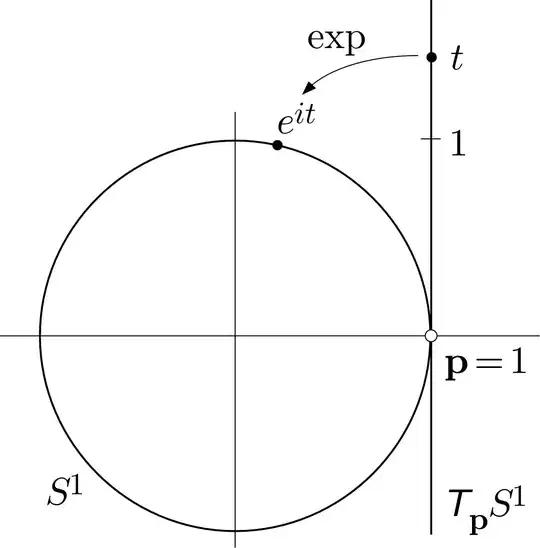The exponential map $exp_{p}:T_{p}M \to M$ given a suitable $v \in T_{p}M$, returns $p$, displaced along the geodesic uniquely determined by $(p,v) \in TM$ for unit "time".
So, what does the above have to do with the familiar concept/s of exponentiation?
Why does this map carry this name?
